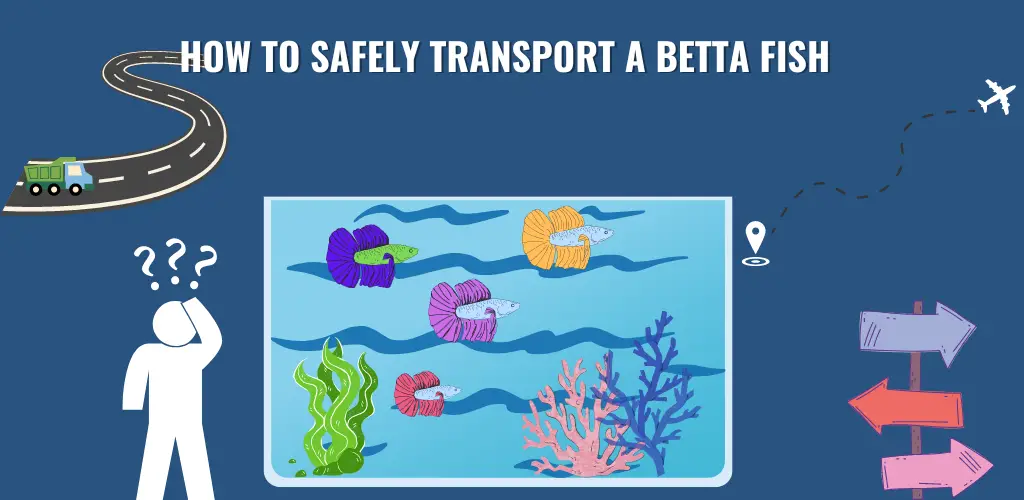Understanding Betta Fish
Before embarking on the process to transport a betta fish, it’s crucial to understand the unique characteristics of these vibrant creatures, also known as Siamese fighting fish. Betta fish are renowned for their striking colors and distinctive finnage. Understanding their needs and behaviors lays the groundwork for ensuring a safe and stress-free transport.
How to Safely Transport a Betta Fish
Transporting a betta fish requires careful attention to detail to minimize stress and ensure their comfort throughout the journey. Follow these steps to safely transport a betta fish:
- Preparation: Begin by selecting an appropriate container for transporting a betta fish. A small plastic container or specialized fish bag is ideal. Ensure the container is clean and free of any contaminants.
- Catch and Transfer: Gently catch your betta fish using a soft net and place them into the transportation container. Adding some of their tank water to the container helps maintain a familiar environment.
- Environment Mimicry: Cover the transportation container with a dark-colored towel or cloth to mimic their natural habitat. This helps reduce stress and keeps the betta fish calm during transport.
Preparing for Transportation
To ensure a safe journey for your betta fish during transport, thorough preparation is essential:
- Container Choice: Choose a container that provides enough space for your betta fish to move comfortably without excessive sloshing. Secure the lid to prevent escapes.
- Water Conditions: Use conditioned water from your betta fish’s tank or prepare fresh water treated with a dechlorinator. Maintain a stable temperature similar to their tank environment to prevent temperature shock.
- Aeration: If using a specialized fish bag, ensure adequate oxygen is present. Leave some airspace in the bag to facilitate oxygen exchange.
Aftercare
After safely transporting your betta fish to their destination, provide proper aftercare to help them acclimate:
- Acclimation: Float the transportation container in their tank water for 15-20 minutes to equalize temperatures. Gradually introduce small amounts of tank water into the container over another 15-20 minutes before releasing your betta fish into the tank.
- Monitoring: Monitor your betta fish closely for signs of stress or illness post-transport. Look for changes in behavior, appetite, or physical appearance that may indicate adjustment difficulties.
- Tank Conditions: Ensure optimal tank conditions, including water quality and stable temperature, to support your betta fish’s health after transportation.
Conclusion
Mastering how to safely transport a betta fish involves meticulous planning and execution. By understanding their specific needs, selecting the right transportation container, and providing attentive aftercare, you can facilitate a smooth and stress-free journey for your beloved betta fish. Whether moving to a new residence or embarking on a short trip, following these guidelines ensures the continued health and happiness of your betta fish.
FAQs
- How long can a betta fish survive in a bag? Betta fish can survive for several hours in a properly prepared bag with adequate oxygen and temperature control. However, minimize their time in transit to reduce stress.
- Can I transport my betta fish in a small bowl? It’s not recommended to transport betta fish in a small bowl due to limited space and lack of proper oxygenation. Opt for a secure transportation container with sufficient room and ventilation.
- Should I fast my betta fish before transportation? It’s advisable to feed your betta fish lightly before transportation to minimize waste production during the journey. Avoid overfeeding to prevent water quality issues.
- Can I use tap water for transporting my betta fish? Use conditioned water or water from your betta fish’s tank to maintain stable water parameters during transportation. Avoid using untreated tap water, which may contain harmful chemicals.
- How should I acclimate my betta fish after transportation? Gradually acclimate your betta fish by floating the transportation container in their tank water and slowly adding small amounts of tank water over time. This helps them adjust to their familiar environment without sudden changes.
- What should I do if my betta fish shows signs of stress after transportation? Monitor your betta fish closely for signs of stress, such as reduced appetite or lethargy. Ensure optimal tank conditions and consult a fish veterinarian if symptoms persist or worsen.




